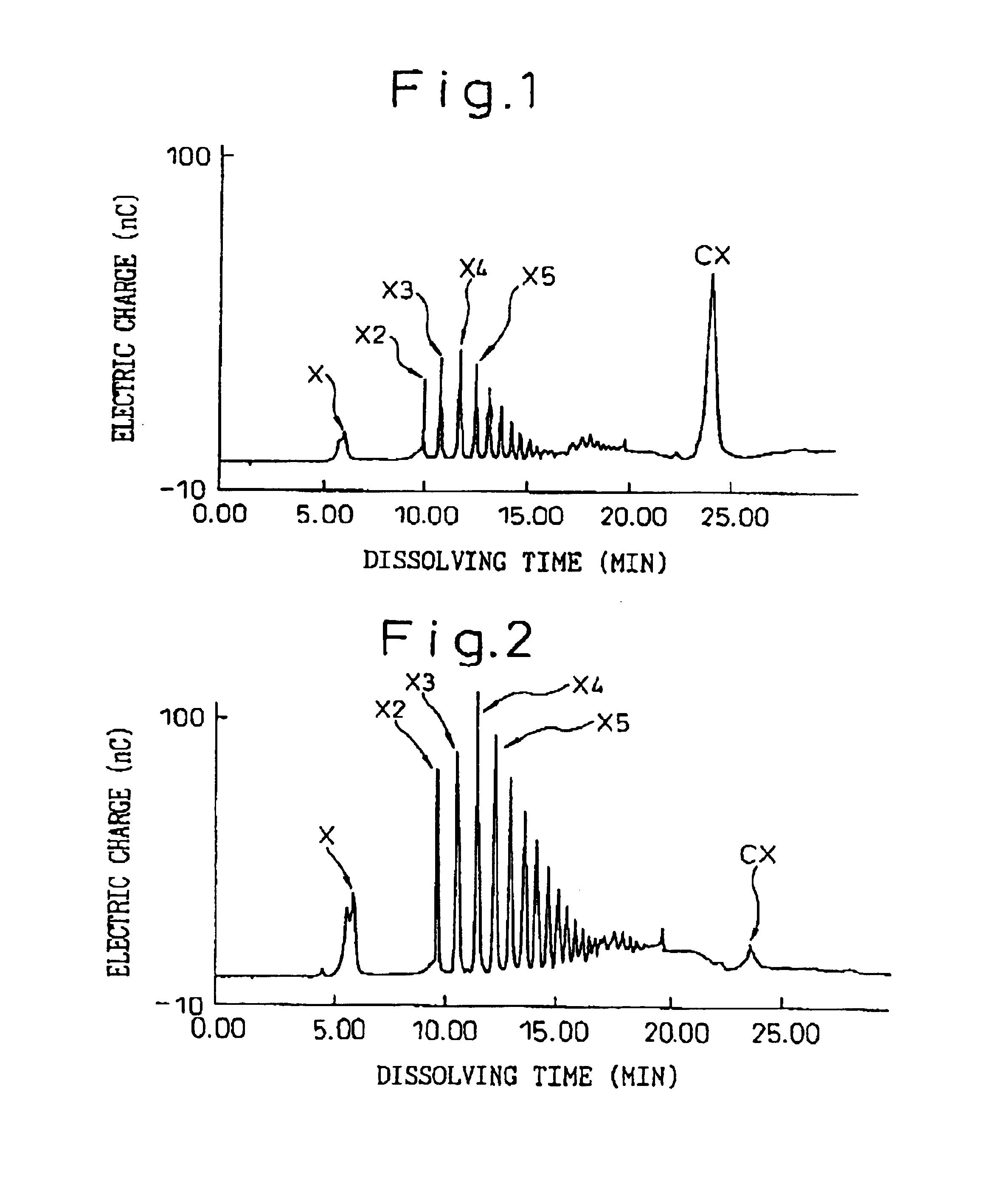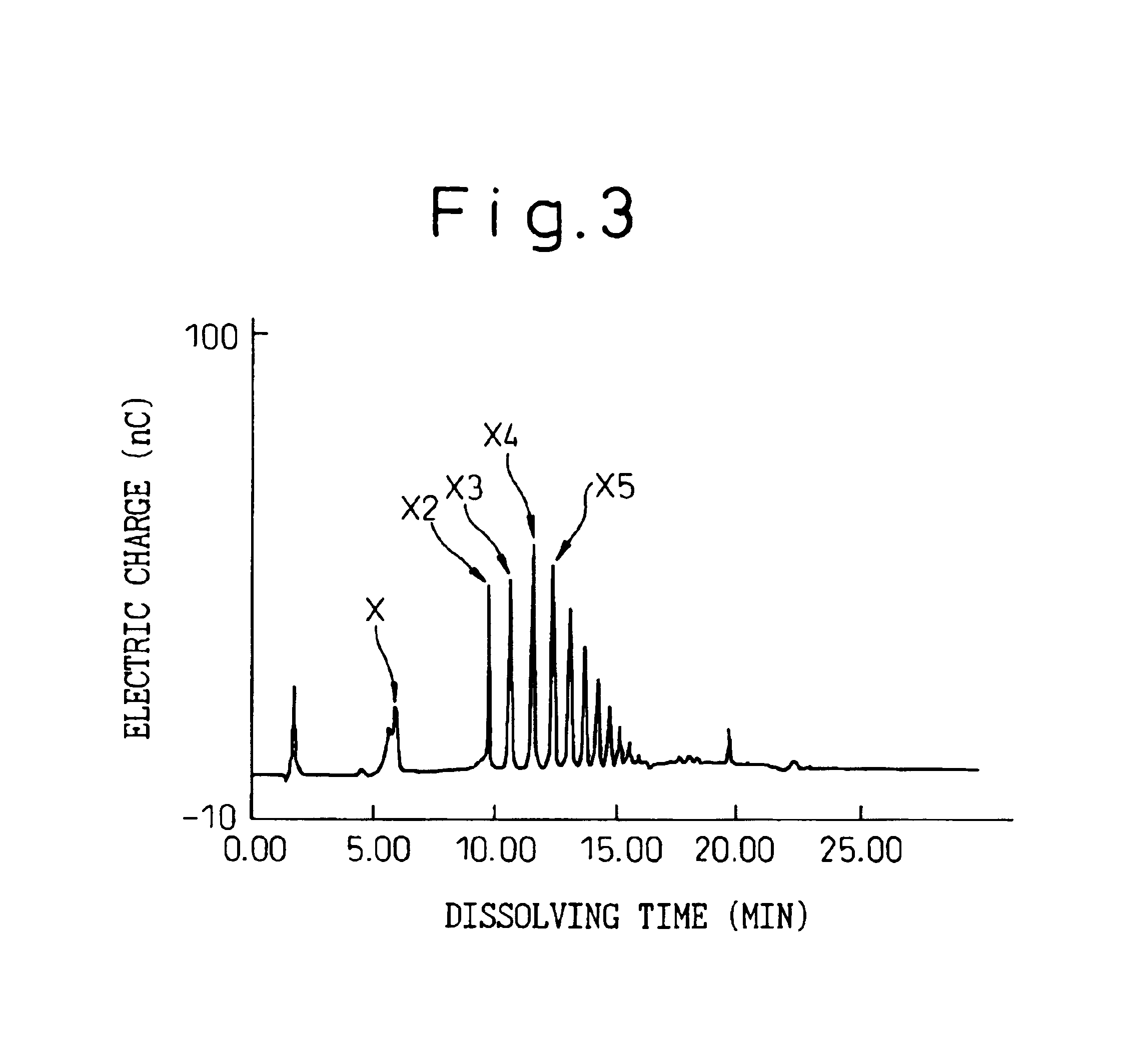Process for producing xylooligosaccharide from lignocellulose pulp
a technology of lignocellulose and xylooligosaccharide, which is applied in the direction of pulp liquor regeneration, finely divided material pretreatment, microorganism/enzyme treatment, etc., can solve the problems of large scale of equipment, unusable method, and high cost, and achieve low cost and high efficiency
- Summary
- Abstract
- Description
- Claims
- Application Information
AI Technical Summary
Benefits of technology
Problems solved by technology
Method used
Image
Examples
example 1
Preparation of Bleached Pulp
[0088]A mixed hardwood chips consisting of 70% by weight of Japanese hardwood chips and 30% by weight of eucalyptus wood chips was pulped by a kraft digesting method in factory. The resultant unbleached pulp had a kappa value of 20.1 and pulp viscosity of 0.041 Pa·s (41 cP). The unbleached pulp was subjected to an alkali-oxygen bleaching procedure in a pulp consistency of 10% in by weight in an aqueous solution of 1.20% by weight of sodium hydroxide based on the bone dry weight of the pulp, with a compressed oxygen gas under a gauge pressure of 4,990,332.50 Pa (5 kg / cm2), at a temperature of 100° C. for 60 minutes. The bleached pulp had a kappa value of 9.6 and a pulp viscosity of 0.0251 Pa·s (25.1 cP).
[0089]Enzyme Treatment
[0090]The pulp was collected through a 100 mesh filter cloth, washed with water and a pulp slurry having a pulp consistency of 10% by weight was prepared. The pH value of the pulp slurry was adjusted to a level of 8.0 by adding a dilut...
example 2-(
2)
[0100]The pH value of the same non-permeated fraction (saccharide-concentrated solution) as in Example 1 was adjusted to 3.5 by adding oxalic acid or sulfuric acid. Each of the pH-adjusted samples of the non-permeated fraction was heat-treated at a temperature of 100° C. for one hour and then subjected to the same analysis as in Example 1. In the analysis results, it was confirmed in comparison with the analysis results of Example 2-(1) in which the heat treatment was carried out at a temperature of 121° C. that the heat treatment of the pH-adjusted samples caused substantially no production of xylooligosaccharide to occur.
[0101]In Table 1, only the analysis results by using oxalic acid are shown. When the sulfuric acid is used, the same results as those by oxalic acid were obtained.
Example 3-(1)
[0102]A sample of the same non-permeated fraction (saccharide-concentrated solution) as in Example 1 was added with sulfuric acid to adjust the pH value of the non-permeated fraction to 3....
example 3-(
2)
[0107]The same procedures as in Example 3-(1) were applied to the same non-permeated fraction as in Example 4, except that in the pH adjustment to 3.5, the sulfuric acid was replaced by oxalic acid, acetic acid or hydrochloric acid. The results of the heat treatment were substantially same as those in Example 3-(1). The contents of the xylose, xylose oligomers (di- to de-camers), and xylooligosaccharide-complex are shown in Table 1.
PUM
| Property | Measurement | Unit |
|---|---|---|
| Temperature | aaaaa | aaaaa |
| Temperature | aaaaa | aaaaa |
| Temperature | aaaaa | aaaaa |
Abstract
Description
Claims
Application Information
 Login to View More
Login to View More - R&D
- Intellectual Property
- Life Sciences
- Materials
- Tech Scout
- Unparalleled Data Quality
- Higher Quality Content
- 60% Fewer Hallucinations
Browse by: Latest US Patents, China's latest patents, Technical Efficacy Thesaurus, Application Domain, Technology Topic, Popular Technical Reports.
© 2025 PatSnap. All rights reserved.Legal|Privacy policy|Modern Slavery Act Transparency Statement|Sitemap|About US| Contact US: help@patsnap.com



